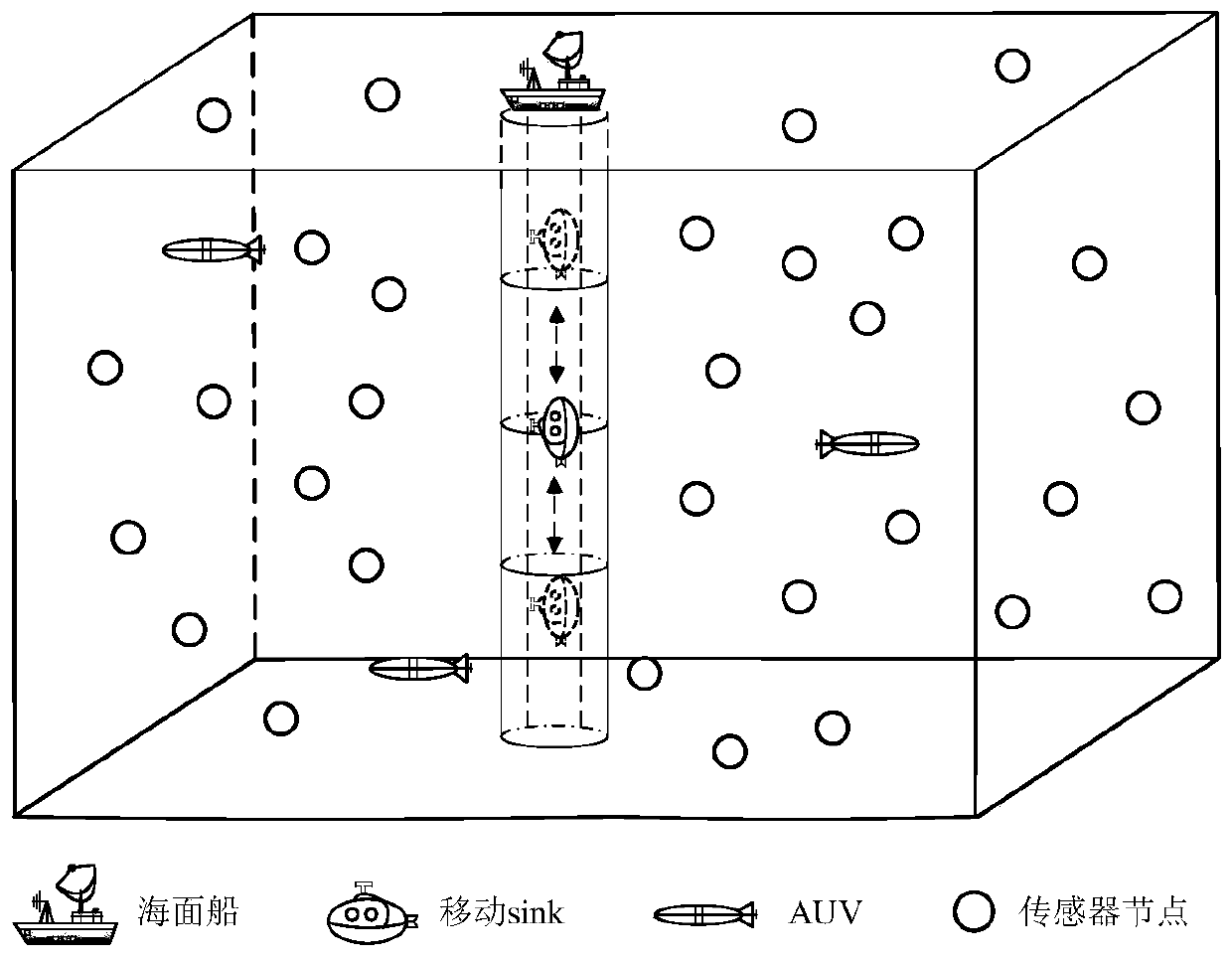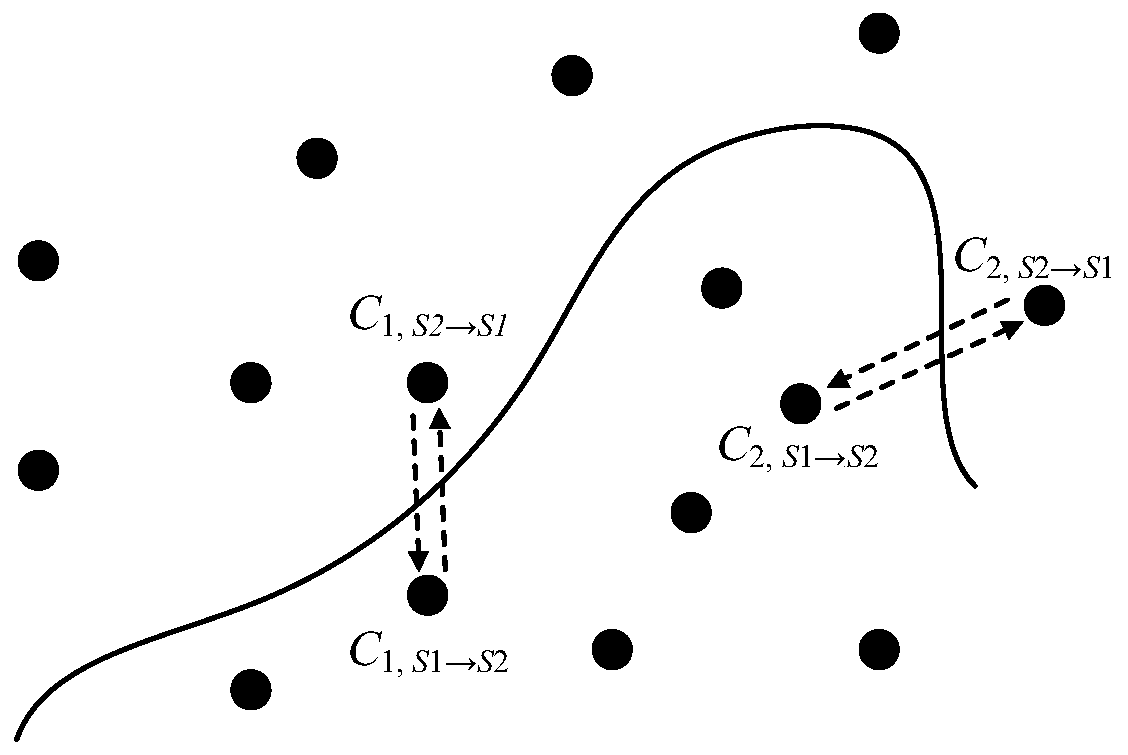Multi-AUV cooperative data collection method based on region division in underwater acoustic sensor network
An underwater acoustic sensor and data collection technology, which can be applied in specific environment-based services, network topology, transmission systems, etc., and can solve the problems of difficulty in replacing batteries and replenishing power, low accuracy, and low transmission success rate.
- Summary
- Abstract
- Description
- Claims
- Application Information
AI Technical Summary
Problems solved by technology
Method used
Image
Examples
Embodiment Construction
[0036] In order to make the object, technical solution and advantages of the present invention more clear, the present invention will be further described in detail below in conjunction with the examples. It should be understood that the specific embodiments described here are only used to explain the present invention, not to limit the present invention.
[0037] The application principle of the present invention will be described in detail below in conjunction with the accompanying drawings.
[0038] When deploying an underwater wireless sensor network, due to the complex characteristics of the underwater environment, the distribution of nodes is often random and uneven in density. In order to reduce the energy consumption of nodes and prolong the life of the network, a specific mechanism is used to divide clusters, and multiple AUVs send the collected cluster head data to the mobile sink. Model this network, such as figure 1 shown.
[0039] Homogeneous nodes are randomly...
PUM
 Login to View More
Login to View More Abstract
Description
Claims
Application Information
 Login to View More
Login to View More - R&D
- Intellectual Property
- Life Sciences
- Materials
- Tech Scout
- Unparalleled Data Quality
- Higher Quality Content
- 60% Fewer Hallucinations
Browse by: Latest US Patents, China's latest patents, Technical Efficacy Thesaurus, Application Domain, Technology Topic, Popular Technical Reports.
© 2025 PatSnap. All rights reserved.Legal|Privacy policy|Modern Slavery Act Transparency Statement|Sitemap|About US| Contact US: help@patsnap.com



